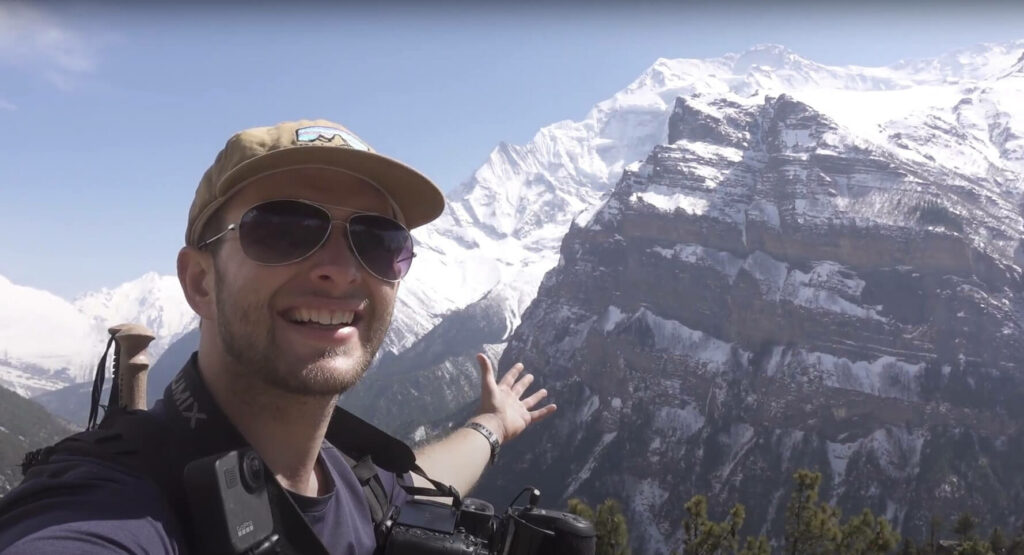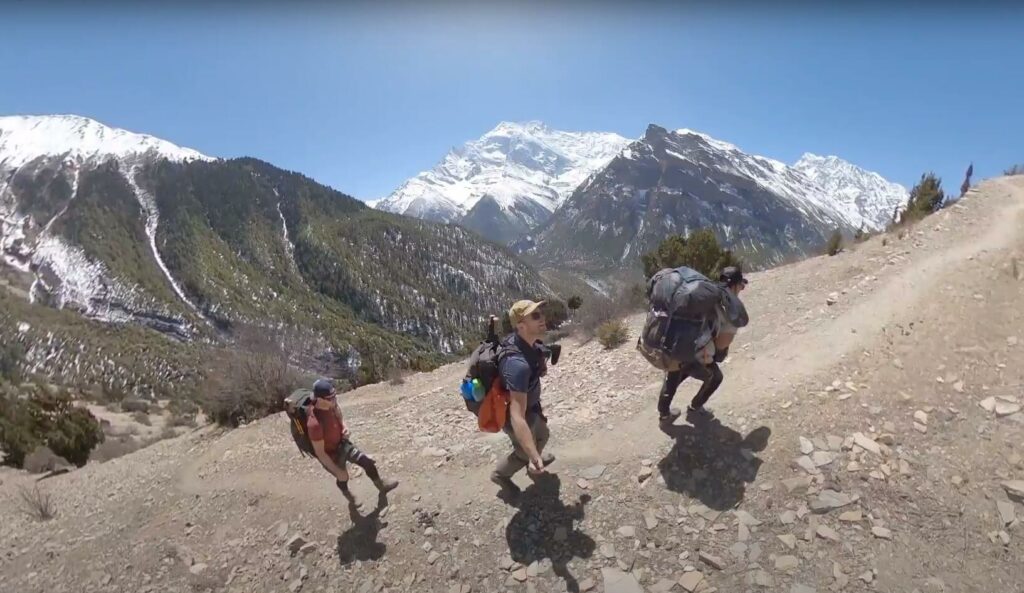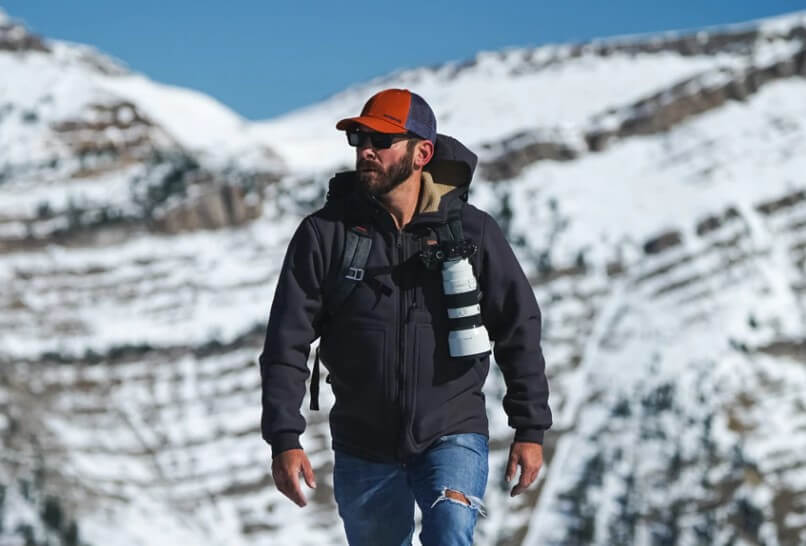Highlights
Table of Contents
Explore article topics
Chances are that if you’re into hiking and adventures in the great outdoors, the videos you get suggested on YouTube reflect that. The algorithm constantly picks out and up videos it thinks you’ll enjoy watching. And in recent years, the “outdoor video” has become a massive niche – particularly hiking videos. Creators like Kraig Adams (think the “ASMR” master of the hiking world) have pioneered the way, creating unique videos that are impossible not to feel relaxed while watching.
Similarly, you’ll find creators such as Elina Osborne documenting her time spent on the Pacific Crest Trail or New Zealand’s Te Araroa. Meanwhile, Black Crag is busy carving out a niche all of his own in the wonderful scenery of the UK’s Lake District National Park. The pandemic has slowed life down for a few years and given people the chance to reconfigure how they live, get outside and appreciate nature more than ever. So there’s never been a better time to start creating your own YouTube channel focused on outdoor video.
In this article, we’re taking a look at all of the essential gear you need to create the very best hiking videos.

Camera choice
When it comes to picking out your primary camera for your hiking videos, it’s hard to narrow it down to just one choice. So we recommend doing some research on the different types of cameras out there, particularly the differences between mirrorless vs. DSLR.
There are a few essential must-have features that you should look out for:
Size
The camera needs to be small, both in size and weight. When you’re hiking, you’re aiming to keep your bag as lightweight as possible. A large camera, while tempting because of the quality it can deliver, will not help you. Go small.
Resolution
Make sure you can shoot in 4K as a minimum. The quality is much sharper, and it’s nice to have that option to zoom in a bit if you’re exporting in a 1080p format for YouTube.
Power your business's creativity with Artlist Business
Stabilization
Ensure that your camera has built-in stabilization (IBS). I’ve found this to personally be a lifesaver. By relying on my IBS, I’ve actually avoided needing to bring a video camera tripod, saving weight and space in my backpack!
Lens choices
Again, we’re not going to recommend you one specific lens here because there are simply so many different designs and brands to choose from. In short, you’ll want to bring 2 at a maximum.
- A wide lens (anything from 12-24mm in range) is perfect for capturing those breathtaking landscape shots. Remember, your viewers want to see the stunning scenery you’re hiking through!
- A long lens (70-200mm is the sweet spot, in my opinion). It allows you to capture some beautiful details and capture the world you’re in with documentary-style footage without impacting the natural action.
It’s worth bearing in mind that, more often than not, long lenses are pretty big and heavy. So you’ll have to decide whether it’s worth bringing or not.
Drone
This one goes without saying. Drones have established themselves as the perfect tool for capturing outdoor video. They offer such versatility, giving us beautiful, wide shots of our favorite landscapes, often from camera angles we’ve never seen before. A drone helps set the scene with an aerial shot that establishes where you are and is an excellent tool for filming yourself in that environment as you hike.
Nowadays, drones are also getting smaller and easier to carry while not compromising on quality, which is a big win for any outdoor video enthusiast.
360 camera
On my recent trek through the Himalayas, I brought a GoPro Max with me and loved the results. I used to think 360 cameras were a little “gimmicky.” However, I think they’re a real asset for creating great hiking videos. Similar to drones, they offer you the ability to easily film yourself hiking through the environment in a 360 video. And you won’t have to stop-start, place a camera down and walk back and forward all the time. The footage you will capture in 360-video style is something unique that can help keep the edit fresh and exciting.
Also, their size and weight are tiny – you don’t have to worry too much about bringing them along in your backpack!

Smartphone
This wasn’t always so essential for filmmaking, but most smartphones these days capture exceptional footage, especially if you use smartphone video accessories such as a phone stabilizer for video. So it might come in handy if you quickly need to record something or are looking to capture footage that feels a bit more natural and authentic.
Shooting videos with your smartphone is useful, but on top of that, I also use my phone to help organize myself by writing out a shot list, as well as mapping my route and even using a translation app to talk with locals I meet along the way.
Microphone with wind buff
Grab yourself a high-quality shotgun microphone and make sure it comes with a wind buff. Audiences can handle video quality that isn’t always crisp and clean, but as soon as you give them poor quality audio, they’ll be gone.
When you’re hiking, you’ll be in environments that are, at some points, quite windy. More often than not, your camera’s in-house microphones won’t hold up in these environments. So a shotgun microphone and protective wind buff are essential, particularly if you’re planning on vlogging and filming pieces to camera. Don’t mess this one up.
Camera clip
I’ve found a camera clip on my bag strap to be essential when shooting any outdoor video. As you’re hiking with your backpack, the last thing you want to do every time you want to film something is to take the bag off, get your camera out, record, put the camera back in and then put the bag back on. It’s incredibly tiring and frustrating. Of course, you could wear the camera strapped around your neck, but the swaying motion is not ideal.

By getting a camera clip for your bag strap, your camera remains always to hand so you can shoot easily on the spot without going through the hassle described above. I recommend taking a look at either Peak Design or Polar Pro – they currently offer the best 2 options.
Extra batteries
This one goes without saying, right? There might be times when you’re in the middle of nowhere without a way to charge for a few days. You need to find that sweet spot between having enough batteries to last a few days of filming while not bringing too much extra weight.
Hand warmers
Of course, it will always depend on the hike you’re doing, but I didn’t think that because it’s so cold at high altitudes in the Himalayas, my batteries weren’t going to last very long.
Stuffing a hand warmer or 2 in your pockets with your batteries can keep that temperature at an agreeable level which means the battery will still operate. You need to keep them warm at all costs because the last thing you want is to work really hard getting to the summit just to find out you’ve got no juice left to capture the moment.
It’s worth noting that some battery brands can endure far colder temperatures than others, which may factor into the decision about which camera you purchase.
Cleaning kit
Hopefully, you just tend to bring this with you wherever you go. Having a cleaning kit to hand is important, especially while shooting outdoor videos. When you’re hiking, you’re in an environment where your cameras can get quite dusty and dirty quickly. Cleaning them down at the end of the day ensured I didn’t end up with “dirty footage.”
File storage
Lastly, but perhaps most importantly, you need to think about the best way to store and backup your footage. If you bring hard drives with you, you’ll also need a laptop for editing, resulting in quite a bit of extra weight in your backpack. It’s not ideal, but I personally feel safer having my footage backed up to 2 hard drives.
Alternatively, if you want to go light and easy, you can bring a few SD cards. You’ll just need to ensure that you have enough storage space to capture the whole trip!
Wrapping up
So, those are the essential pieces of gear you need to create great hiking videos. The list is pretty similar to what you might need for travel vlogging equipment, just with a few more nuances and things to consider – especially when it comes to backpack weight.
With the checklist above, you’re ready to head out on your adventures and capture the perfect outdoor video that you’ve been dreaming about. We can’t wait to see what you create!
Josh Edwards is an accomplished filmmaker, industry writing veteran, storyteller based in Indonesia (by way of the UK), and industry writer in the Blade Ronner Media Writing Collective. He's passionate about travel and documents adventures and stories through his films.
Share this article
Did you find this article useful?
Related Posts
- By Josh Edwards
- 10 MIN READ
- By Jessica Peterson
- 8 MIN READ
Latest Posts
- 25 Apr
- By Josh Edwards
- 4 MIN READ
